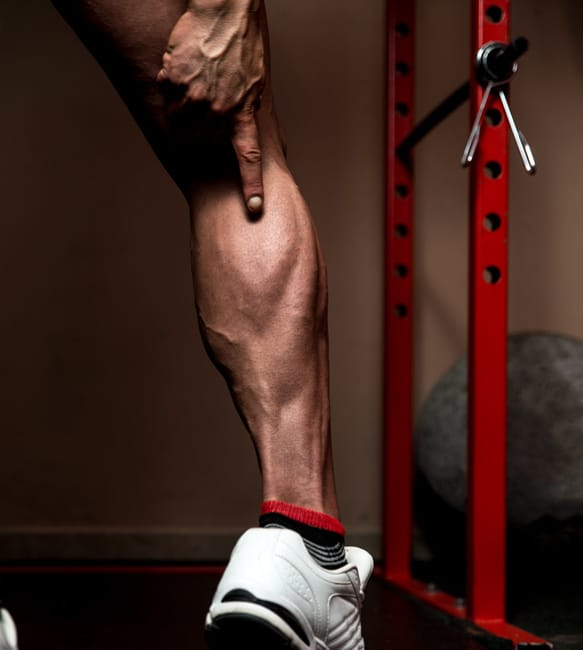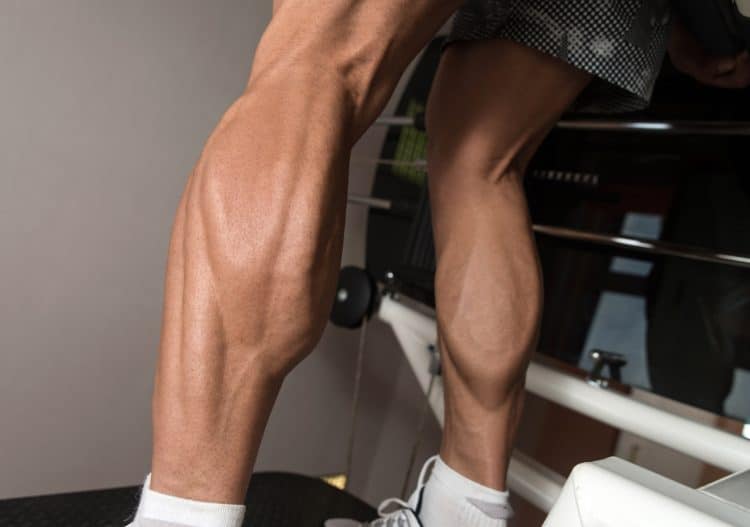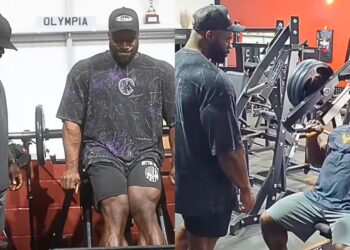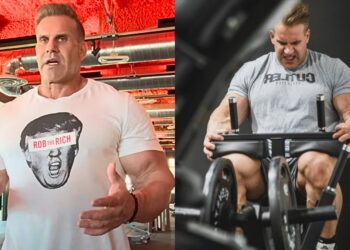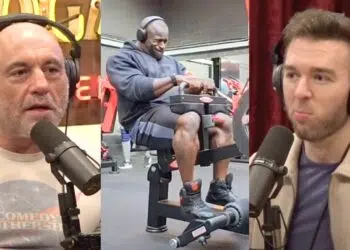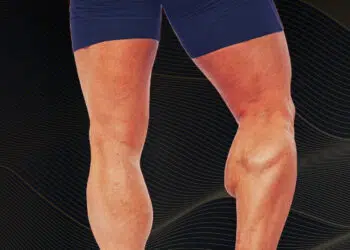The desire to build bigger calves is as old as the barbell. Anyone who’s ever touched a weight has experienced a moment of yearning for bigger lower legs.
Unfortunately, an alarming trend has overtaken lifters of all walks of life: giving up on training calves altogether. Many will chalk up undersized calves to genetics and throw on a pair of pants while they pump up their upper bodies to no end. Calves are completely forgotten.
If this is you, fear not. It’s time to dust off those workout shorts and dedicate yourself to growing those twigs once and for all. The following could be the last guide for bigger calves you’ll ever need.
Why are calves so hard to grow?
Yes, genetics do play a role in calf size potential. We’ve all seen that guy or girl who glides across the gym with huge, developed, muscular calves without ever doing a single calf raise. Their parents, kids, and even grandmother all have boulder-sized lower legs simply by existing.
Not fair, you cry.
While genetics does matter, ask yourself what can you really do about it? Some body parts are just harder to develop than others. Whether it’s nature, pure neglect, or the fact that you treat them as an afterthought at the end of a brutal leg training day. Getting your calves to grow is an uphill climb few are willing to traverse.
Level Up Your Fitness: Join our 💪 strong community in Fitness Volt Newsletter. Get daily inspiration, expert-backed workouts, nutrition tips, the latest in strength sports, and the support you need to reach your goals. Subscribe for free!
A quick anatomy lesson
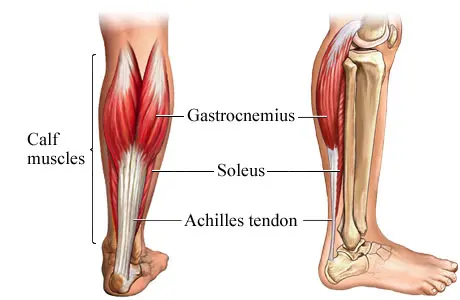
The calves consist of two main muscles of the lower leg. Each can be optimally targeted with specific exercises.
Gastrocnemius: This muscle has two heads that originate at the femur and attaches to the Achilles tendon. Well-developed gastrocnemius form that coveted upside down heart shaped form to the lower leg. It is best trained with straight leg calf exercises.
Soleus: This wide and flat muscle originates just below the knee at the tibia and fibula and runs down your leg to attach to the Achilles tendon just above the heel. The soleus gives your calf that wide thick look. It is best trained with bent leg calf exercises.
Will I never build big calves?
In a word, yes. Calves are like any other muscle group – they respond to training. However, you may find yourself in a precarious situation. If your calves have been under trained and neglected for years you’ll have your work cut out for you.
Other, more well-developed body parts are most likely that way due to your undivided attention. In other words, if you have a broad, well-balanced, full chest it’s probably due to the time, frequency, and focus you’ve put into chest training over the years. Maybe you did countless push-ups as a kid for years on end that developed vital and efficient nerve innervations in that area. So, by the time you pressed your first barbell your chest was primed and ready to soak up all the muscle tissue growth it could.
Calves, on the other hand, may have hidden under your pant legs all that time, never to even be thought of for future development. I mean, what teenager is impressed with big calves when you can show off your more theatrical muscle groups like arms and chest?
The bottom line is that to begin your journey of one thousand miles will take some serious commitment on your part. Principles such as dedication, discipline, and focus will become your new vernacular. If it took those same principles to build that chest or arms of yours, then the same will be required for bigger calves. There’s no way around it.
Start building bigger calves in your head
The first step is a mental one. Don’t skip this one. You must first believe that you will build bigger calves. I know this sounds a bit woo woo, but stay with me here.
Think about it. You most likely believe every single day that you’ll build a huge chest and peaked biceps. I might be so inclined to say that you think about those things every time you step foot in the gym. But how about your calves? Do they get the same treatment? Do they receive the same mental and emotional energy? I didn’t think so.
Building any muscle group will always start in the head. You can no longer just think of calf training as a few sets thrown in at the end of a leg workout. They must take priority.
Here are a few things to put on your to-do list before you build a plan.
Level Up Your Fitness: Join our 💪 strong community in Fitness Volt Newsletter. Get daily inspiration, expert-backed workouts, nutrition tips, the latest in strength sports, and the support you need to reach your goals. Subscribe for free!
- Stop wearing pants to the gym. Early in his bodybuilding career, Arnold had small calves. Even some of his photoshoots were taken in knee-deep water to hide this flaw. Seeing this weak point and having the desire to build a balanced physique, he cut all of his workout pants at the legs so that his calves would show at every workout. This enabled him to constantly see his weak point in the gym and in his head.
- Prioritize calves. Place your calf training at the beginning of your workout. This will ensure you give your calves the focus, attention, and intensity they deserve. I can’t do calves before thighs you cry? Well, if you’re already coming up with excuses then you’re not serious. Prioritize them.
- Plan your workout. No more just winging it. Formulate a solid plan of attack. I’m talking frequency, volume, sets, reps, rest, etc. The better the plan the more room for success. Also, you’ll want to keep track of things. Keep a log of your training, record all of the aforementioned items, and adopt a progression mindset. Treat your calves like their own special project.
- Expect pain. Real, effective calf training is tough, it’ll hurt, and you may even doubt it at times. But stick with it. Once you get past the uncomfortable pain barrier, you’ll quickly start making strides in strength and eventually growth. Don’t despair, these things will take time and commitment. Think of it as a lifestyle change, not a quick fix.
Build your bigger calf plan
Now let’s take a look at those factors mentioned earlier. Here we’ll take each step one by one and build out your plan to finally build bigger calves.
Plan your frequency
Now, we’re not suggesting you train calves every single day. Going from zero to 60 overnight isn’t realistic. Start slowly but deliberately. Go twice per week on nonconsecutive days. Maybe a Monday and a Thursday will work for those who train most days of the workweek. Over time you can increase this to three times per week if desired.
Plan your volume
There’s no reason calves need a low volume of training. Conversely, they don’t require endless sets either. Choose two angles: one for the gastrocnemius (the heart-shaped muscle that’s mainly worked with straight leg movements) and one for the soleus (the underlying calf muscle which gives the area its width and is worked when the knee is bent). Standing and seated calf raises and their alternatives will do the trick.
Sets and reps
To start, go with three to four sets of the two chosen exercises. If you’re new to this type of focused training, no more is needed for one workout session. Reps are a tricky subject. There are many beliefs on which rep range is best – generally high or low reps.
But, as I’ve alluded to earlier, calves are very similar to most other body parts. Yes, they can endure a ton of activity, but when it comes to weight training they react similarly. Stick with the general rule of eight to 12 reps per set and up to 15 at times.
Rest
You don’t want to have enough time to scroll through your phone, chat with a buddy, or space out between sets. Calves have an incredible ability to recover between sets rather quickly. They are endurance-oriented, mind you. Keep a strict timer on your rest periods.
One to one-and-a-half minutes will be plenty. Remember, you’re trying to build muscle, not see how much you can lift.
Execution
Here is one of the most important things of all. No more bouncing around with short, choppy reps. You don’t do that for bench presses or squats so why do that to your calves? Lower your heels slowly and under control, feel the stretch at the bottom for a moment, then start to raise your heels up with a hard contraction at the top for a second. This type of form is imperative to your success.
If you can’t get a full stretch then you most likely have tight Achilles tendons and need to aggressively stretch them every day. Yes, every day. If you’re serious about building some significant calf muscle tissue then you’ll heed this advice and put it into real-world practice. Now, let’s take a look at a few sample calf-building programs.
Sample calf building programs
The following programs are designed for those who are new to serious calf training. You may have several years, or decades, of weight training under your belt, but your calves may still think you’ve just started.
Additionally, don’t let their simplicity fool you. If you’re executing the exercises correctly, as described above, it won’t take some uber-detailed, complicated plan to grow your calves. Remember, don’t overthink this.
You can either adopt one of these for a month or two or alternate each workout (Routine 1 and 2) each week.
Routine 1
Day 1
- Standing calf raise 3-4 x 8-12
- Seated calf raise 3-4 x 10-15
Day 2
- Bent-knee hack machine calf raise 3-4 x 8-12
- Leg press calf raise 3-4 x 8-12
Routine 2
Day 1
- Seated calf raise 3-4 x 10-15
- Straight single-leg with dumbbell calf raise 3-4 x 10-15
Day 2
- Leg press calf raise 3-4 x 8-12
- Bent single-leg with dumbbell calf raise 3-4 x 10-15
Read More on Calves:
- Best Old-School Calf Workouts & Exercises
- Most Effective Calf Raise Exercises
- 6 Awesome Calf Exercises
- Donkey Calf Raises Alternatives
- Best Calf Raise Machine Alternatives
- 5 Best Calf Raise Machines Reviewed
Supplements
What’s any muscle-building program without mentioning supplements? Of course you have the gambit at your disposal when choosing which ones to try, but there are a few tried and true players that have been around for years and will continue to do so because of one reason: they work.
- Protein: As the staple of any diet, protein is vital to building muscle. Protein powder can be a convenient way of getting in some extra grams of the stuff especially when you’re having an off day eating real food. Whether it’s whey, egg, veggie, or any other type of powder, the most important thing is to supplement around your workout with a good product to ensure you’re getting in enough on a daily basis. (Find best protein supplements)
- Creatine: What hasn’t been said about creatine monohydrate? As the most researched supplement in history creatine is highly effective at replenishing intra workout energy and improving recovery between workouts. (Find best creatine supplements)
- Vitamin D: If you’re the type who spends a lot of time indoors or just wants to give your system some insurance, then vitamin D is a must. It helps regulate hormone levels to a balanced level when sunlight is in short supply. (The body naturally produces vitamin D by sun exposure).
In closing
Building any muscle group isn’t rocket science. The real difference in your success lies within the attention and focus you give them. Calves are no different. Treat them as you would any other muscle you desperately wanted to develop and finally give away those ridiculous workout pants.

